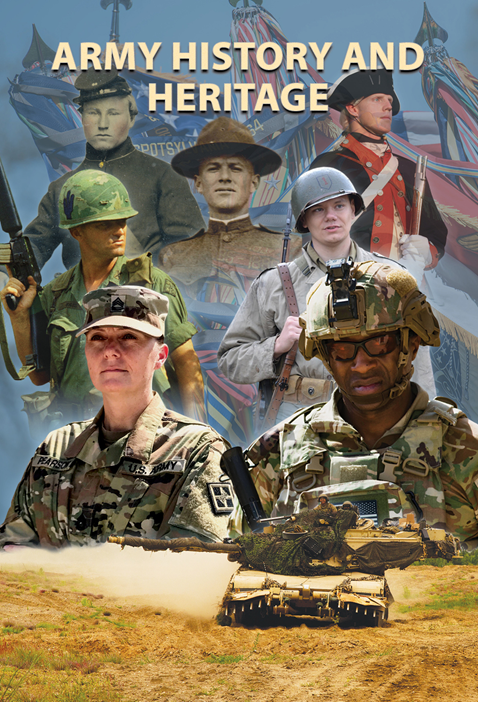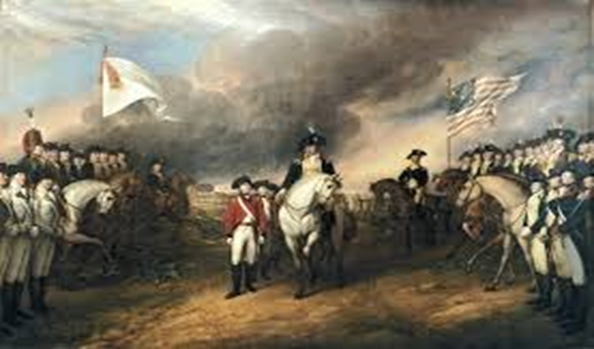Diversity
All attributes, experiences, cultures, characteristics, and backgrounds of the total force which are reflective of the Nation we serve and enable the Army to deploy, fight, and win.
Race - A division of humans identified by the possession of traits that are transmissible by descent and that are sufficient to characterize persons possessing these traits as a distinctive human genotype.
Ethnicity - That which sets off a group by race (defined as genetic), religion (preferred denomination), national origin (country of one's ancestors), or some combination of these categories.
Nationality - An individual's or ancestor's place of origin. Also applies to a person who has the physical, cultural, or linguistic characteristics of a national group.
Gender - The internal perception, experience, or sense of being male or female. Includes how a person labels themselves based on how much they align or do not align with what they understand their options for gender to be. Common identity labels include man, woman, trans or transsexual, and gender fluid, among others. Gender identity may or may not align with one's physical anatomy.
Sexual Orientation - The type of sexual, romantic, and/or physical attraction an individual feels toward others of the same or opposite sex.
Religion - A personal set or institutionalized system of attitudes, moral or ethical beliefs and practices held with the strength of traditional views, characterized by ardor and faith, and generally evidenced through specific observances.
Equity
The fair treatment, access, opportunity, choice, and advancement for all Soldiers and Civilians while striving to identify and encourage drivers and identify and eliminate barriers that have prevented the full participation of the total force.
ARMY VALUES
- Loyalty - Bear true faith and allegiance to the U.S. Constitution, the Army, your unit, and other Soldiers. This means supporting the military and civilian chain of command, as well as devoting oneself to the welfare of others.
- Duty - Fulfill your obligations. Duty is the legal and moral obligation to do what should be done without being told.
- Respect - Treat people as they should be treated. This is the same as do unto others as you would have done to you.
- Selfless Service - Put the welfare of the Nation, the Army, and your subordinates before your own. This means putting the welfare of the Nation and accomplishment of the mission ahead of personal desires.
- Honor - Live up to all the Army Values. This implies always following your moral compass in any circumstance.
- Integrity - Do what is right, legally, and morally. This is the thread woven through the fabric of the professional Army ethic. It means honesty, uprightness, the avoidance of deception, and steadfast adherence to standards of behavior.
- Personal Courage - Face fear, danger, or adversity (physical or moral). This means being brave under all circumstances (physical or moral).
Leadership Development
The deliberate, continuous, sequential and progressive process, grounded in Army values, that grows Soldiers and Civilians into competent and confident leaders capable of decisive action. Leader development is achieved through the lifelong synthesis of the knowledge, skills, and experiences gained through the developmental domains of institutional training and education, operational assignments, and self-development.
Inclusion
The process of valuing and integrating each individual's perspectives, ideas, and contributions into the way an organization functions and makes decisions; enabling workforce members to achieve their full potential in focused pursuit of organizational objectives.
Removing Barriers
Empowers leaders to identify harmful trends targeting a specific stigma or stereotype, thereby assisting the command in overcoming discrimination and eliminating barriers.
Fair & Impartial Treatment
The belief that persons, irrespective of individual demographics shall be treated in the same basic manner under the same or similar circumstances.
Amry Team Building
Army team building is a continuous process of enabling a group of people to reach their goals and improve their effectiveness through leadership and various exercises, activities and techniques (FM 6-22).
- The goal of Army team building is to improve the quality of the team and how it works together to accomplish the mission.
Unit Cohesion
Unit Cohesion is the bond of relationships and motivational factors that help a team, unit or organization works together. A cohesive team puts aside interfering differences and chooses to work together. Teams develop cohesion through three elements: bonding, commitment, and resolve.
- Bonding is the development of strong interpersonal relationships among team members and their leaders. Bonding results from shared experiences through which interpersonal relationships are developed.
- Commitment is dedication to the team and what it represents and to the values and goals of the Army. All team members must be committed to working as members of the team and realize that others depend on them.
- Resolve is the shared determination and motivation of teammates to work interdependently to accomplish the mission and to sustain this capability over a long period.
COMMANDER'S VISION STATEMENT
Warfighting focused, powered by inclusion and cohesion, delivering sustainment professionals and solutions to achieve victory.
The CASCOM and Fort Gregg-Adams Community is committed to maintaining a positive command climate free of discrimination, founded upon safe, equitable, and inclusive conditions that create diverse, adaptive, and cohesive teams where everyone is treated with dignity and respect.
Commanders and leaders at all levels must foster environments which allow individuals to speak openly and candidly without fear of reprisal. We must encourage tough conversations about improving our team, to include: having leaders who are committed and engaged; enhanced mission readiness; be the employer of choice; inclusive leader development programs; inclusive culture Army-wide; and total force equity. Our people are our greatest strength and most important weapon system. We will leverage the diversity of experience, values, and talent to ensure the Army maintains a competitive advantage in the war for talent.
COMMAND TOPICS
The intent of the Command Topics is to help further develop an awareness and understanding of diverse and inclusive topics within our unique community, through relatable and entertaining resources that provide a variety of perspectives. Join Community leaders and build upon Diversity is our Strength this month as we continue to enjoy and educate ourselves through a diverse assortment of literature, media, art, film, music and more!
Each month the Command TOPIC features a new theme or focus that highlights a particular group topic or perspective.
This month’s observance will be "Army Heritage"

A documentary about World War I with never-before-seen footage to commemorate the centennial of the end of the war.

This book is dedicated in honor and in memory of General William W. Hartzog, the ninth commanding general of the Training and Doctrine Command and a historian at heart. He wrote the initial version of this book, American Military Heritage, “to provide a reference that could help drill instructors and other Army leaders instill an appreciation for the lore and traditions that make up the Army’s rich heritage.” T he study and understanding of military history and appreciation of our proud and rich heritage are critical to personal and professional growth for soldiers. They are the foundation that allows us to expand our expertise within the profession of arms. They lay the cornerstone for our personal contribution to our Army, and give us the means to leave it in a better place than we found it. We stand on the shoulders of the exceptional men and women, who, for nearly 250 years, have made history and forged our shared heritage. Our history is our incredible legacy. It connects the current generation of soldiers to our departed but not forgotten brethren. It demonstrates that no matter how much time has passed, we continue to be the most lethal and powerful Army in the world. History reminds us that we serve for something far greater than ourselves and that we are willing to endure incredible sacrifices for the love of our great nation. A professional Army continuously strives for excellence and self-improvement. Learning from significant historical events can be painful, informative, and incredibly inspirational. Let us strive to learn from the lessons of those proud warriors who came before us, so that we never need to relive the trials of the past.
Victory Starts Here! Fort Eustis, Virginia 7 January 2022 GENERAL PAUL E. FUNK II 18th Commanding General, U.S. Army Training and Doctrine Command

Army Heritage Month Podcast
Hosted by Army Soldiers and filmed on location at the Yorktown battlefield, this video is about the last main battle of the Revolutionary War. It highlights the Army's core values in action as the hosts walk you through the tactical elements and locations of the battle.
U.S. Army Center of Military History
Command Topics Disclaimer: The appearance of a title and accompanying summary in this list do not imply or constitute an endorsement or an approval by United States Combined Arms Support Conmmand of any of the products, services, or opinions of the authors or creators. However, these books, articles, music, and other media contain thought-provoking ideas and viewpoints relevant to diversity and inclusion. CASCOM neither controls nor guarantees the accuracy, relevance, timeliness, completeness, or legality of the content of the books, articles, music, and other media referenced in this list.






